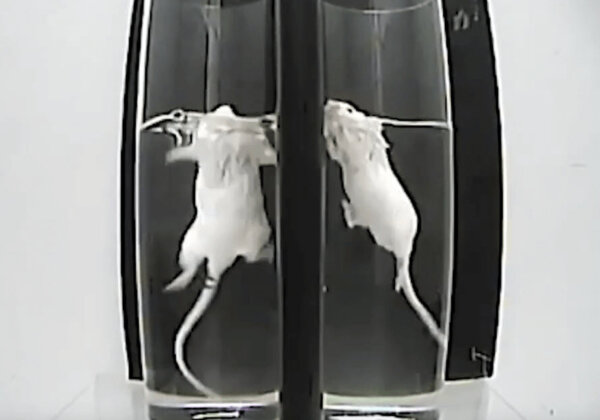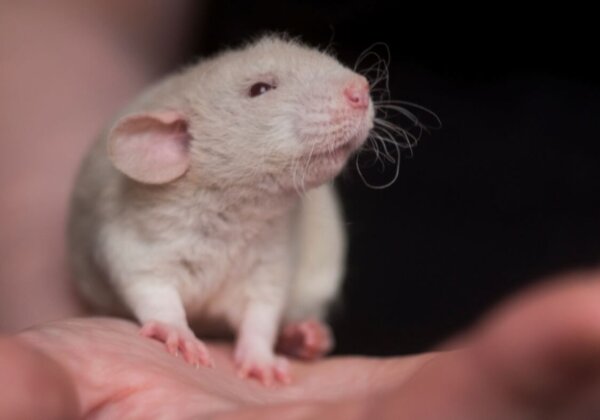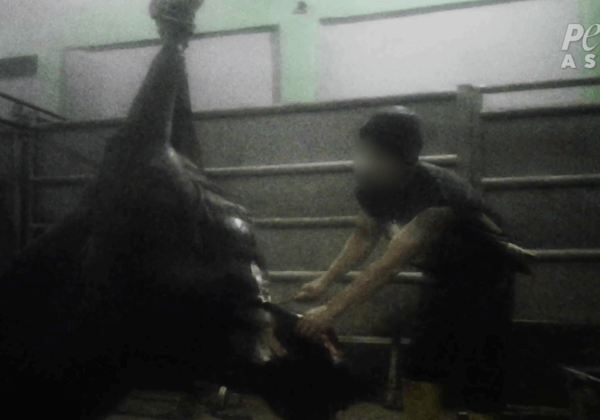Shocking Investigation: Lab Shocks Monkey Penises Until Ejaculation
A six-month PETA US undercover investigation into the Wisconsin National Primate Research Center (WNPRC) – which keeps nearly 2,000 monkeys in barren steel cages and bleak, windowless rooms – found that highly intelligent animals were being neglected, driven mad by extreme long-term confinement, and attacked by their traumatised cagemates.
Severe Confinement, Constant Stress, and Mutilation
Monkeys at WNPRC spend every day and every night locked inside barren metal cages. They never feel the warmth of the sun on their backs or the earth beneath their feet. Stripped of their autonomy, they’re unable to make decisions regarding the most basic aspects of their lives. Constant, unremitting captivity causes these smart, sensitive animals extreme psychological distress, leading some to injure each other and themselves.
A baby monkey, named Cocoa by the PETA US investigator, was attacked by a severely stressed adult macaque, resulting in deep, painful cuts to her face. Months later, her wounds still had not fully healed, and she clung to her mother in fear.

Incompatible animals were forced to live together in just a few square feet of space, and a monkey named Ellie lost part of her ear in a fight with a cagemate.
Amputations of parts of fingers, toes, and tails were a common result of the traumatic injuries sustained by monkeys in WNPRC’s care. A worker said that some of these highly intelligent animals were caged alone “because they’re a**holes ” who “beat the crap out of” each other – completely ignoring that the fights were a result of the monkeys’ unnatural, barren living conditions.
One frustrated monkey, known only as r12050, mutilated his own leg down to the muscle. With nothing to occupy his mind, he picked and scratched compulsively at the open wound.
“We’re not supposed to say they look depressed .”
Highly intelligent, social macaques – who, in their natural habitats, explore and roam vast grasslands and lush forests – paced, circled, and shrieked in the never-ending lockdown. One monkey, named Sainte, rocked continuously from side to side, all alone and miserable in a small cage.

When they weren’t being simply warehoused, animals were used in painful procedures and experiments.
Workers euphemistically referred to certain monkeys as “semen donors,” but they had certainly not volunteered for the painful process. Typically, the monkeys are fitted with metal collars, and workers use poles that fasten onto the collars to pull them out of their cages by the neck. The monkeys are then strapped into a restraint chair, and experimenters electroshock their penises until they ejaculate.
Many different types of experiments were being carried out at this facility. One experimenter bred monkeys infected with Zika and simian immunodeficiency virus, which is similar to HIV. Infant macaques were deprived of food overnight for “cognitive testing” and cried endlessly when separated from their companions. A supervisor said that experimenters attempted to infect marmosets—small, delicate monkeys—with COVID-19 but that “nothing happened.”
See the full PETA US investigation here.
Monkeys Are Used in Experiments in Australia, Too – Help Them
According to the most recent available data, hundreds of primates are being used in a variety of biomedical experiments in Australia. It’s time to relegate such cruel experiments to the history books.
We must shift away from all procedures that use animals. Sign our petition to support the Research Modernisation Deal.







